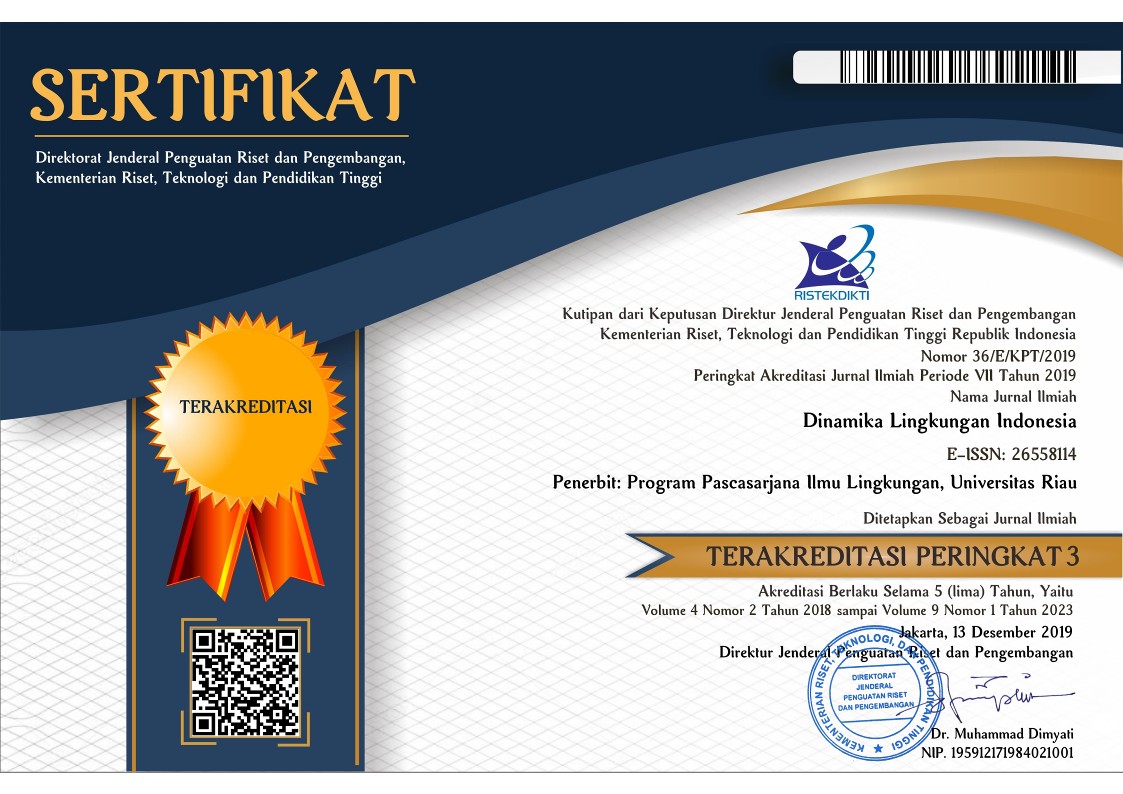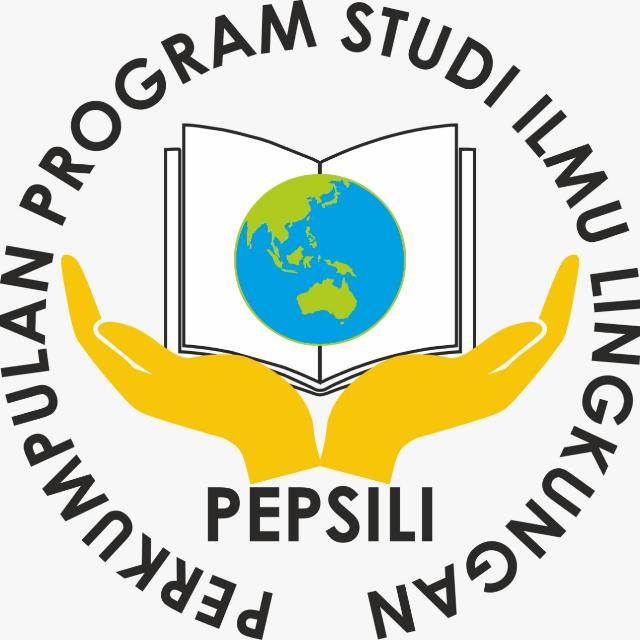Potensi korosivitas pada tanah endapan dataran banjir sungai Citarum di Karawang, Jawa Barat
Abstract
Corrosion is the biggest problem for equipment that utilised metal, including infrastructure. Corrosion is degradation of metal quality due to the chemical reaction of a metal with the surrounding environment, including soil. Important indicators that contribute to the classification of the rate of corrosivity in soils are water content, pH, types of minerals, soil resistivity values and other chemical-physical parameters. The research area is in Anggadita Village, Klari District, Karawang Regency, West Java Province. Drilling and sampling locations are approximately 300 meters from the Citarum river. The article aimed to investigate between physical and chemical characteristics (soil texture, type of resistivity, pH) of weathered sediments of the Citarum river flood plain to the classification of soil corrosivity. Soil classification in the study area is fine grained and classified into silt with high plasticity (MH-ML) and clay with high plasticity (CH). The results of the analysis of the distribution of potential soil corrosivity in the study area indicate that the level of soil corrosivity is at a high level of corrosive to very high corrosive
Keywords
Full Text:
PDFReferences
Achdan, A., & Sudana, D. (1992). Peta Gelogi Lembar Karawang. Bandung: Puslitbang Geologi.
Anonimous. (2012). Soil Corrosion. Diambil 28 Januari2020,dari:https://mechanicalbrothers.wordpress.com/2012/07/04/soil-corrosion/.
ASTM. (2012). ASTM G187 – 12 Standard test method for measurement of soil resistivity using the two electrode soil box method. ASTM International, West Conshohocken, PA, 2003.
Bahri, S. (2007). Penghambatan korosi baja beton dalam larutan garam dan asam dengan menggunakan campuran senyawa butilamina dan oktilamina. GRADIEN: Jurnal Ilmiah MIPA,3(1),pp.231236.https://ejournal.unib.ac.id/index.pHp/gradien/article/view/211/185.
Bradford, S. A. (2001). Practical handbook of corrosion control in soils; Pieplines, tanks, casings, Cables, Publishing Ltd, Edmonton, Canada.
Bowles, J. E. (1989). Sifat-Sifat Fisis dan Geoteknis Tanah (Mekanika Tanah). Edisi Kedua, Penerbit Erlangga, Jakarta.
Busby J. P., Entwistle, D., Hobbs, P., Jackson, P. Johnson N, Lawley R, Kinley K, Mayr T, Palmer R., Raines, M., Reeves, H., Tucker, S., Zawadzka, J. (2012). A GIS for the planning of electric earthing. Journal of Engineering Geology and Hydrogeology. Vol. 45, pp. 379-390. https://doi.org/10.1144/1470-9236/11-023.
Camitz, G. (1998). Corrosion and protection of steel piles and sheet piles in soil and water. Report 93, Swedish Commission on pile research. Availableat:http://www.geoforum.com/info/pileinfo/corrosion.asp.
Chofyan, I., Rustan, H. U., & Hariyanto, A. (2015). Upaya Mempertahankan Kabupaten Karawang Sebagai Lumbung Padi Nasional. Laporan Akhir Penelitian. Universitas Islam Bandung.
Farahnaz, N., SopHian, R. I., & Agung Mulyo, H. (2018). Potensi Tanah Mengembang Hasil Lapukan Batuan Vulkanik Berdasarkan Indeks Plastisitas Di Kawasan Desa Cilayung. Geoscience Journal, 2(1), pp.82-89.http://journal.unpad.ac.id/geoscience/article/download/15600/7323
Hanafiah, K. A. (2007). Dasar-Dasar Ilmu Tanah. PT. Raja Grafindo Persada, Jakarta.
HSE. (2011). HSE/Ofgem: 10 year review of the iron mains replacement program. Prepared by Cambridge Economic Policy Associates Ltd for the Health and Safety Executive and Office of Gas and Electricity Markets.
Irianto, A. I., & Rahmawati, E. (2014). Prototipe Alat Ukur Resistivitas Tanah Dengan Metode Four-Point Probes. Prosiding Pertemuan Ilmiah XXVIII HFI, Jateng &DIY, ISSN:0853-0823.
Lestari, D. S., (2019). Perhitungan Nilai Korosivitas Air Terhadap Infrastruktur Sumber Daya Air Berbahan Logam. Jurnal Infrastruktur, Vol.5 hal.72.
Moechtar, H. (2011). Sedimentologi Dan Stratigrafi Endapan Sungai Citarum Di Wilayah Peralihan Morfologi Pegunungan Dan Dataran Tinggi Bandung Antara Desa Cikawao Dan Desa Nagrak (Kec. Pacet) Dan Desa Sukamaju (Kec. Majalaya), Kab. Bandung. Jurnal Geologi Dan Sumberdaya Mineral, 21(4), Pp.191-
http://dx.doi.org/10.33332/jgsm.geologi.21.4.191-201.
Mulyono, P. R. (2017). Perancangan Sistem Proteksi Katodik Anoda Tumbal Pada Pipa Baja API 5L GRADE B Dengan Variasi Jumlah Coating Yang Dipasang Di Dalam Tanah. Surabaya. Skripsi: Institut Teknologi Sepuluh Nopember.
Neff, D., Dillmann, P., Descostes, M., & Beranger, G. (2006). Corrosion of iron archaeological 48 artefacts in soil: Estimation of the average corrosion rates involving analytical techniques and thermodynamic calculations”. Corrosion Science. Vol. 48, pp. 2947-2970. https://doi.org/10.1016/j.corsci.2004.05.029.
Noor, E. A., Al-Moubaraki, A. H. (2014). Influence of Soil Moisture Content on the Corrosion Behavior of X60 Steel in Different Soils. Arab J Sci Eng 39, pp. 5421–5435 https://doi.org/10.1007/s13369-014-1135-2.
Noor, N. M. d., & Othman, S. R. (2010). Soil Corrosion and Integrity Management of Buried Pipeline, Jurutera, IEM Bulletin, Oct 2010, pp. 10-12.
Nurnburger, U. (2012). Long time behaviour of non-galvanized and galvanized steels for geotechnical stabilization applications. Materials and corrosion. Vol. 63, pp. 1173-1180. https://doi.org/10.1002/maco.201206680.
Okiongbo, K. S. & Ogobiri, G. (2013). Predicting soil corrosivity along a pipeline route in the Niger Delta Basin using geoelectrical method: Implications for corrosion control”. Engineering,5(03),p.237.http://dx.doi.org/10.4236/eng.2013.53034.
Pritchard, O., Hallett, S. H. & Farewell, T. S. (2013), “Soil corrosivity in the UK–Impacts on Critical Infrastructure”. ITRC–Infrastructur Transition Research Consortium, Cranfield . University.https://itrc.ouce.ox.ac.uk/wpcontent/PDFs/Soil-corrosivity-impacts-UK-infrastructure-report.pdf.
Putra, R., Muhammad., Huzni, S., & Fonna, S. (2018). Pengaruh Faktor Lingkungan Terhadap Potensi Korosi Pada Pipa Air Bawah Tanah di Jalur Kreung Peusangan Hingga Krueng Geukueh, Aceh Utara. Jurnal Teknik Mesin Untira, IV/I.
Reynolds, J. M. (1998). An Introduction to Applied and Environtmental GeopHysics. New York: John Wiley & Sons.
Ridwan, M., Sunandi., & Rukmana, Y. Y. (2019). Laporan Soil Investigasi Pabrik PT. BIB Karawang. Laporan Pekerjaan. Bandung: PT. Geosindo Utama. Tidak Dipublikasikan.
Rieger, H. P. (1992). Electrochemistry, 2nd ed. Chapman and Hall Inc, New York, 412-421.
Saheb, M., Descostes, M., Neff, D., Matthiesen, H., Michelin, A., & Dillmann P. (2010). Iron corrosion in an anoxic soil: Comparison between thermodynamic modeling and ferrous archaeological artefacts characterised along with the local in situ geochemical conditions. Applied geochemistry. Vol. 25, pp. 1937-1948.https://doi.org/10.1016/j.apgeochem.2010.10.010.
Shidiq, M. F. (2013). Analisa korosi dan pengendaliannya. Jurnal foundry, 3(1), pp.25-30.ISSN:20872259.http://www.academia.edu/download/37414696/53-143-1-PB.pdf.
Sugiyono. (2010). Metode Penelitian Kuantitatif, Kualitatif, & RND. Bandung : Alfabeta.
Thomas, G. W., & Hargrove, W. L. (1984). The chemistry of soil acidity. In Adams, F (Ed). Soil Acidity and Liming Second edition”, Wisconsin (USA): American Society of Agronomy Inc. https://doi.org/10.2134/agronmonogr12.2ed.c1.
Tiba, C., de Oliveira, E. M. (2012). Utilization of cathodic protection for transmission towers through pHotovoltaic generation. Renewable energy, Vol. 40, (1), pp. 150-156 https://doi.org/10.1016/j.renene.2011.09.020.
US Army Corps of Engineers. (1995). Geo Physical Explorationfor Engineering and Environmental Investigations. EM1110-1-1802.
Wahyuni, T., & Ab, S. (2014). Pemanfaatan Tanin Ekstrak Daun Jambu Biji Terhadap Laju Korosi Besi Dalam Larutan NaCl 3%(w/v). Jurnal Konversi,3(1).https://doi.org/10.24853/konversi.3.1.%25p.
Warnana, D. D., Iswahyudi, A., & Prabawa, S. E. (2015). Penentuan Area Korosi Tanah Lokal Berdasarkan Resistivitas Tanah Untuk Perancangan Sistem Proteksi Katodik”. Jurnal Geosaintek, 01/01.
Wasim, M., Shoaib, S., Mubarak, N. M., Imanuddin, & Asiri, A. M. (2018). Factors influencing corrosion of metal pipes in soils. Environ Chem Lett 16, pp.861–879
DOI: http://dx.doi.org/10.31258/dli.7.2.p.62-69
Refbacks
- There are currently no refbacks.





